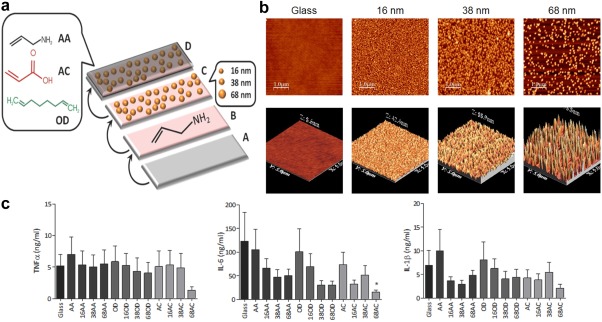Figure 6.

Implant surface morphology and chemical composition induces innate cell activation and cytokine secretion. (a) Schematic depiction of glass cover slips coated with gold nanoparticles, then functionalized with allylamine (AA), octadiene (OD), or acrylic acid (AC) to form biomimetic surfaces abundant in amino, alkyl, or carboxylic acid groups, respectively. (b) Atomic force micrographs showing 2‐D (top) and 3‐D (bottom) surfaces with different roughness due to the different particles diameters. (Top scale bar, 1 µm; lower scale 5 µm × 5 µm). (c) Macrophages cultured on these surfaces exhibited different secretion levels of pro‐inflammatory cytokines TNF‐α (left), IL‐6 (center), and IL‐1β (right); cells cultures on the roughest surfaces (prepared with 68 nm particles) reduced inflammatory cytokine secretion. Reprinted with permission from Christo SN, Bachhuka A, Diener KR, Mierczynska A, Hayball JD, Vasilev K. The role of surface nanotopography and chemistry on primary neutrophil and macrophage cellular responses. Adv Healthcare Mater. 2016;5(8):956‐965
